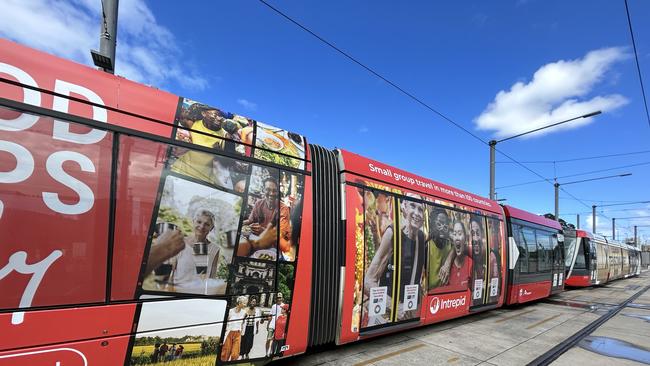Marketers up investment in brand marketing citing record growth
Marketers’ love affair with performance marketing is dwindling as businesses cut online budgets in favour of brand marketing activity across traditional channels to drive growth.

Australian businesses are shifting marketing investment into brand marketing activity, citing increased awareness, better sales and a greater return on investment.
Companies including Intrepid Travel, Koh and Airtasker have reported strong uplifts in business results and brand metrics after adjusting performance marketing budgets and increasing brand activity across TV, out-of-home, radio and press channels.
Global travel company Intrepid Travel overhauled its marketing plans in the aftermath of the pandemic, boosting its brand marketing budget allocation from 10 per cent while decreasing its performance marketing from 90 per cent to create an even 50/50 spilt.
The move delivered a 68 per cent increase in bookings and 41 per cent growth in online revenues to reach $180m, which represented 10,000 more direct customers.
“We had our biggest and best year ever,” Intrepid Travel chief customer officer Leigh Barnes told The Growth Agenda. “We were able to massively shift the amount of revenue we got from direct customers by 40 per cent, grow web bookings, and we had a massive increase in people searching for the brand, which was fantastic.”
Mr Barnes, who began his career as a performance and search marketer, said the move had also improved Intrepid’s performance marketing activity, with the conversion rate from paid search jumping 90 per cent year-on-year.
“We know that we wouldn’t have seen that increased improvement if it wasn’t for the brand work. You can’t search for something you don’t know,” he said.
“The nadir for (performance marketing) was the industry’s obsession with attribution. It disproportionately gave better outcomes to things that we could measure. We’ve also had a rise of digital marketers over the past 10 years, and with the rise of the board and leadership appetite to know the ROI on everything, we focused on efficiency over effectiveness. I think it was an over-correction and the market is rebalancing.”
Australian-born business Koh began its rebalancing efforts earlier this year, achieving a 115 per cent year-on-year surge in direct traffic following the launch of integrated marketing activity across TV, BVOD, out-of-home, radio and press channels.
The “light touch” campaign, which saw the brand shift just 10 per cent of its marketing budget to traditional channels, had delivered a 32 per cent increase in brand awareness quarter-on-quarter, 50 per cent growth in organic traffic and a 34 per cent jump in search traffic year-on-year.
Koh chief executive Charli Walters told The Growth Agenda the brand was now investing 30 per cent of budget into traditional channels with a plan to increase this to a 50/50 spilt within the next 18 months.
“I don’t believe that you can build a brand that stands the test of time relying purely on one channel,” Ms Walters said.
“When you are purely focused on bottom-of-the-funnel platforms, your marketing efficiencies are going to be compromised.”
The results from Intrepid and Koh echo the findings of a consumer research study by brand consultancy FutureBrand, which found that many consumer brands were underperforming on personality and story and failing to build strong connections with consumers.
FutureBrand chief executive Rich Curtis said the findings could be attributed to the market’s over-index on performance marketing activity. “The performance marketing approach has been taken to its extreme in some cases and it has led to consumer brands behaving in ways that are more similar and less distinctive,” he said.
“As a consequence, they don’t have the opportunity to tell their story, show their personality and build trust with consumers. That becomes a missed opportunity in the pursuit of efficiency.
“There is this opportunity that we identify in the insights from this year’s FutureBrand Consumer Index to disrupt the status quo in a meaningful way.
“I think that will be partly a rebalancing between approaches that embrace performance marketing and approaches that champion brand building with campaigns that build an emotional connection around authentic storytelling. It might feel quite ‘Back to the Future’, but those are tried and tested strategies and I think marketers could do well to rediscover or relearn them.”
With consumers seeking greater authenticity and trust from businesses, marketers believe the traditional media channels such as TV and out-of-home also help lend credibility to the brands.
“There’s an element of credibility in traditional media,” said Ms Walters. “In the online world people are exhausted. They have been screamed at by so many brands; and with so many scams around, consumers are sceptical. They don’t trust it. The idea that you exist in the real world through TV or out-of-home advertising really adds credibility to the brand.”
Mr Barnes agrees. “The fact that you can buy a billboard or TV ad sends a message to consumers to trust you. You don’t get that same level of trust on a PPC or programmatic ad. We’ve also seen that we get more branded searches in the cities where we do more brand marketing. So not only are more people searching for our brand but our conversion rates are also better. We believe, anecdotally and through qualitative research, that it’s because of the trust and credibility of seeing an ad from us.”
This sentiment is shared by Airtasker chief executive Tim Fung, who last week told The Growth Agenda the online marketplace was increasing its brand marketing spending across traditional media channels in a bid to become a household name.
Mr Fung cited the saturation of online ads and the subsequent issues with online attribution as another factor driving the business to invest more in traditional channels. “I think there is going to be a renaissance towards traditional media – on TV, audio and outdoor particularly,” he said.




